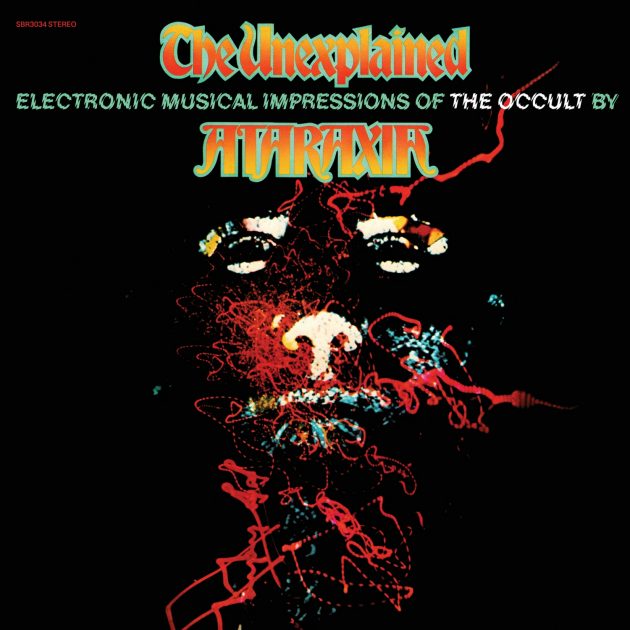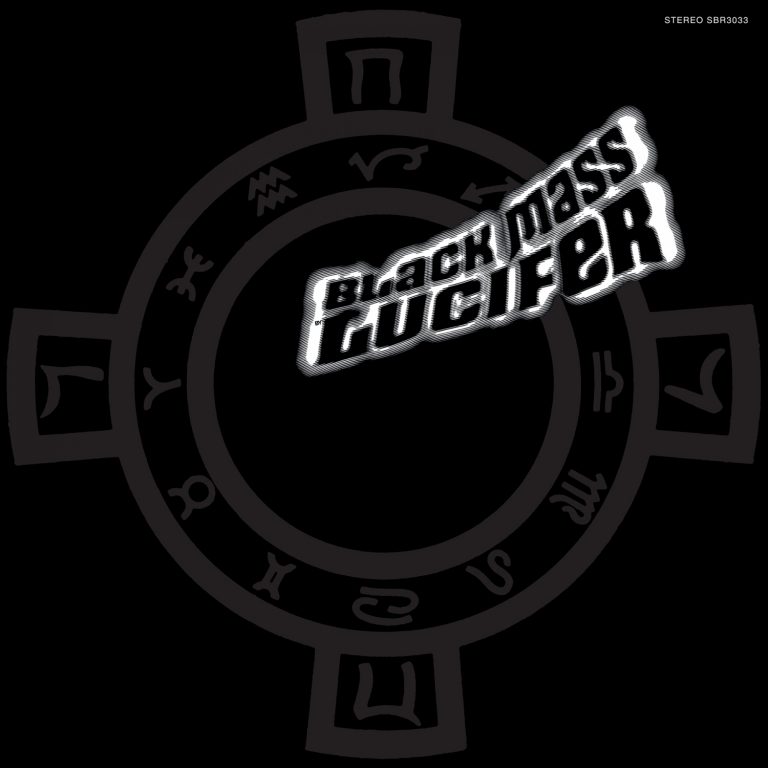Legendary Moog pioneer Mort Garson’s album Black Mass, released under the moniker Lucifer, first came to my attention while listening to a Last Podcast on the Left episode about Bob Berdella. The serial killer, who would eventually be known as The Kansas City Butcher, had the album on his turntable when the police investigated his home where he brutally tortured and killed six victims, it’s dark artwork and concepts playing perfectly into the mounting rumors of Berdella’s involvement in satanic practices. Black Mass was out of print for 35 years before it was first re-released on CD in 2016, and this latest version on deluxe vinyl is one of several Garson reissues coming from Sacred Bones.
The excitement I had built around this record made me think of what it must have been like buying a copy of Black Sabbath’s self-titled record in 1970. The artwork for Black Mass is equally as eerie as Sabbath’s, featuring mysterious runes and symbols on the front and a giant pentagram on the back. Unfortunately, that’s about as scary as the record gets – but that’s totally fine.
It’s very easy to see how a completely instrumental synth album like Black Mass would freak about suburban squares across the country in 1971, but the album leans more psychedelic than spooky. “Ring of Solomon” starts things off with a flourish of electronic strings that give way to some synths that fit more into a space setting than the occult. By the time the simple bouncing bass notes drop in, the track has transformed into something more macabre that could easily soundtrack the opening credits of an early slasher film. “The Ride of Aida”, centres on break-neck, bubbling percussion that sounds straight out the first Crash Bandicoot game (although preceding it by decades), until Garson starts sprinkling in random synth pulses that sound like UFOs that don’t really adhere to the voodoo vibe of the track.
The erratic inclusion of these sound effects are the biggest distractors on Black Mass. Many of the tracks, like “Incubus”, build up from sparse soundscapes, and the pay off is seeing how the new-at-the-time Moog was able to combine the layers into something that resembles a song. The swinging, spooky rhythm that the track settles into is quickly overpowered by some effect laden demon sex moaning, which fits with the thematic content, but is ultimately more annoying than it is anything else.
Most fan reviews of the record recall hearing Black Mass coming out of well-decorated homes on Halloween night while trick or treating, or used as the soundtrack for haunted house attractions, and while it feels kind of cheap to write off the record as nothing more than background FX music, thats what it kind of feels like. This should not undermine how groundbreaking it was for Garson to release an all-original instrumental synth album in 1971, but the exploratory nature is evident and leaves the final product somewhat restrictive for a 2020 listen.

Also a part of Sacred Bones’ Mort Garson reissue campaign is The Unexplained, originally released in 1975 under the moniker Ataraxia. The album is the spiritual successor to Black Mass, and continues to explore themes of the occult and the strange. The album opens with the ominous “Tarot”, with twinkling chimes lead the way for grandiose electronic organ sounds. The tones used here, from the synth lines to the springy percussions, sound darker and more dialled-in than those used on Black Mass. Once Garson has set the mood, he unleashes some serious synth riffing that is unhindered by random and sporadic sound effects, allowing the musicality to take the spotlight.
Overall, there seems to be more thought put into the organization and structure of The Unexplained than Black Mass. Instead of dividing tracks into segments of slow-burning soundscapes that transform into more song-like sections, he keeps the ideas separate. Tracks like “Sorcerer”, “Seance”, and “Cabala” are the sparser, moodier offerings, but the use of sound effects is a little more refined and the synth tones are darker than those used on Black Mass. “Cabala” almost breaks through into the ‘actual song’ category with its haunting organ segment, which is reminiscent of the opening track, but it too short-lived and overpowered by the segments of sound washes and whirs that surround it.
The tracks that follow more traditional song structures are the highlights of The Unexplained and where Garson’s influence on later electronic music is most evident. “Deja Vu” begins as a minimal Exorcist-esque theme that drops into a dark groove that could definitely be drawn upon by James Blake or Aphex Twin, while “I Ching” channels hand-held 8-bit vibes that are reminiscent of the sounds used on Flying Lotus’ Pattern + Grid World. The album’s title track is an absolute jam that could still get a dancefloor going, its primal bass synth line and programmed beat reminiscent of early New Order.
The fully fleshed-out song ideas are what allow The Unexplained to fly above Black Mass. Where Garson used Black Mass to see how dark he could get with the Moog, The Unexplained is the result of a period of reflection on that first test dive into the strange, in order to fine tune these sounds into something more focused and powerful.

